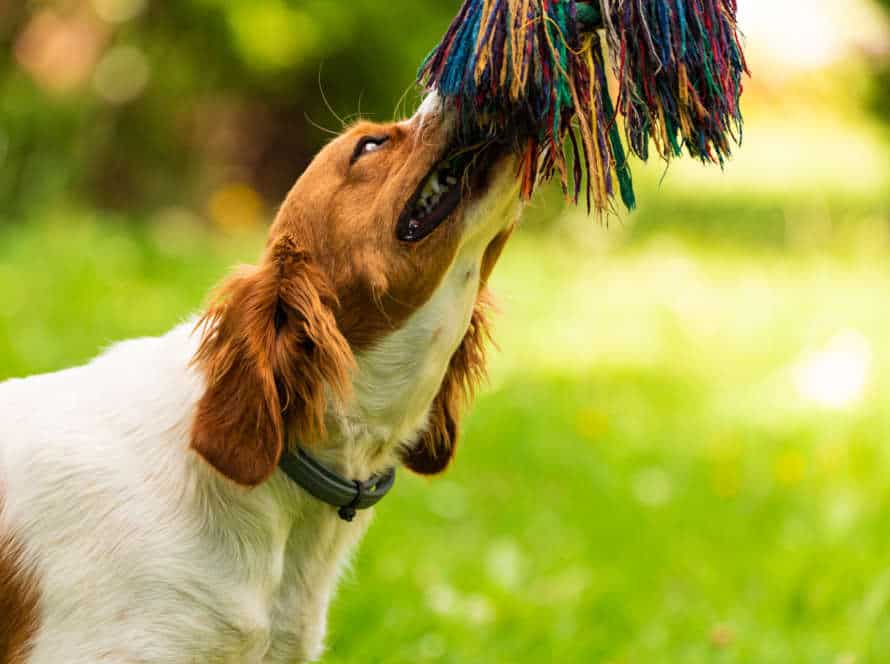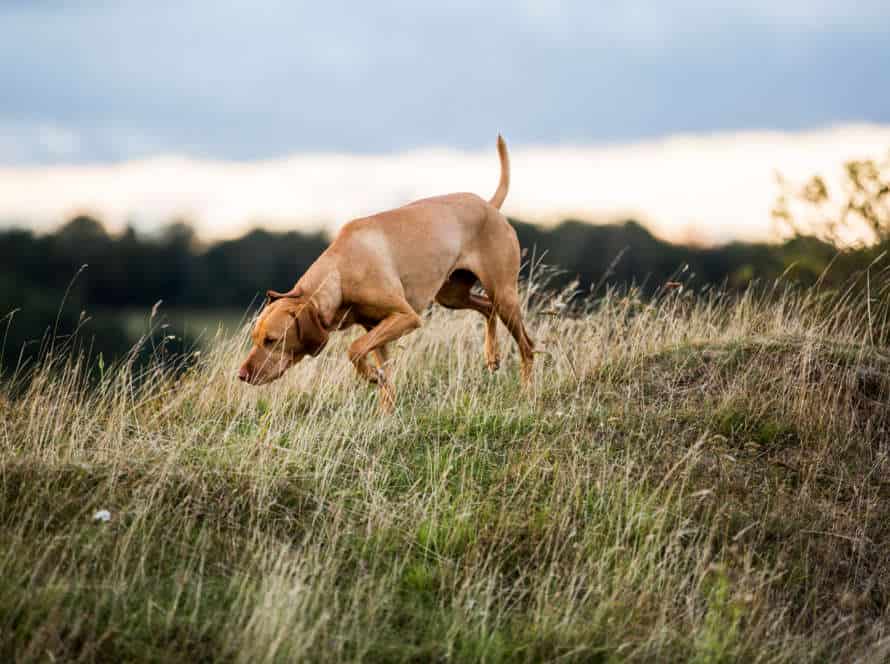Fetch Safety: Avoiding Common Hazards and Injuries
For fetch safety, it’s essential to take precautions. Tips to keep in mind:
- Use a soft ball or dog-friendly toy.
- Pick a safe spot, not near busy roads.
- Don’t overexert your pup and watch for exhaustion/dehydration.
- Increase fetch distance gradually to avoid muscle strains.
- Monitor movements/behavior and stop if signs of discomfort/pain.
Fetch play is a great way to bond and make memories – always prioritize safety and well-being.
Common hazards and injuries for dogs
Fetch is a game enjoyed by both dogs and humans. However, playing fetch can be risky for your furry friend! From minor scratches to more major issues like broken bones and ligament damage, there are a variety of hazards and injuries that can occur. Let’s take a closer look at these dangers.
Heat stroke or heat exhaustion
In hot summer months or during strenuous exercise, heat stroke or heat exhaustion can be a common hazard for dogs. Symptoms include:
- panting
- lethargy
- vomiting
- diarrhea
- collapse
If your pup exhibits any of these, take action! Move them to a shaded area. Give them sips of cool water. Cool down their body temp with a wet towel or spray bottle, especially the neck, head, and groin.
If their condition worsens, take them to the nearest vet. Never leave your dog unattended in a car or outside without shade and water when it’s hot.
Dehydration
Dehydration is a hazard and injury for pooches. It can have bad health results if neglected. Here are some tips to dodge dehydration in your pup:
- Always have a clean, fresh supply of water available for your dog, especially in hot or humid weather or after exercising.
- Don’t leave your pup in hot and humid places, like a car or out in direct sunlight, for long periods.
- Keep an eye on your pup’s peeing, pooping, and the color of their gums and tongue which should stay wet and pink. If you spot any signs of dehydration, like dry mouth or sunken eyes, get in touch with your vet right away.
- Take regular breaks and give your pup water during outdoor activities like hiking or fetch. You could even get a portable water bottle or collapsible bowl for hydration on the go.
Choking or swallowing foreign objects
Choking or swallowing foreign objects is a common danger for dogs. So, be alert and take safety steps to prevent such incidents.
Here are some tips to help:
- Pick the right size toy for your pup. Too small or too big can endanger them.
- Avoid toys that can break into small bits or have parts chewable and swallowable.
- Stay with your dog during playtime, especially if they are known chewers or swallowers.
- Train your dog to drop and let go of toys when you command. This prevents swallowing or choking.
- If you think your dog swallowed something or is choking, get veterinary help right away.
Avoiding common hazards and injuries
Fetching is a great pastime for lots of folks and their furry friends. But, if safety measures are not observed, it can be dangerous. Hazards and injuries may include sprains, strains, and fractures. In this article, we’ll chat about the typical hazards and injuries that come with fetching and how to evade them.
Keep your dog hydrated on walks or outdoor activities
To keep your pup safe from dehydration and heatstroke, especially during hot weather, follow these tips!
- Carry a portable water bowl and fresh water with you on walks/hikes.
- Every 15-30 minutes, offer your pup some water.
- Choose routes with shade to protect them from direct sunlight.
- Avoid hot surfaces like asphalt that can burn their paws.
- Keep an eye out for signs of dehydration, such as panting, dry gums, or lethargy. If any of these present themselves, seek medical attention.
Doing this will make outdoor activities more enjoyable for both of you!
Invest in a well-ventilated, safe crate while traveling
Investing in the perfect crate is key for a safe and comfortable trip with your pet! Here are some tips to keep in mind when selecting the right crate:
- Pick the size that fits your dog’s size and comfort level. Let them stand, turn, and lie down easily.
- Ensure the crate is sturdy and won’t collapse or break.
- Check the ventilation, protection, and resistance to temperatures.
- Secure the crate well while traveling – no rolling or falling!
Remember to always prioritize your pet’s comfort and safety when traveling. Pro tip – the right crate is essential!
Monitor your dog around pools or open bodies of water
If you own a pool or live near water, monitor your pup and take precautionary measures to avoid water-related accidents. Here are some tips:
- Teach your dog swimming and never leave them alone near water.
- Put up a pool fence to keep your pup away from the pool area.
- Use a life vest for all water activities.
- Train your pup to get in/out of the water via stairs and not jump in blindly.
- Clean your pup’s coat after swimming to remove chlorine/salt residue.
By following these tips, you and your pup can have a safe and enjoyable summer. Pro Tip: Monitor your pup closely and supervise them when around water.
Emergency first-aid
Do you often visit dog parks to play fetch with your furry friend? Then, you must learn first-aid! Emergencies can occur anytime. It’s essential to know the basics of common injuries and hazards. Learn the best steps for providing immediate first-aid. This article will cover the basics of first-aid for injuries and hazards linked to fetch.
CPR and Heimlich maneuver
It’s key to know CPR and the Heimlich maneuver for emergency first-aid – they can save lives!
CPR is used when the heart stops beating and the person stops breathing. Acting quickly with CPR can keep the person alive until professional medical help arrives.
The Heimlich maneuver is used when a person is choking and can’t clear the obstruction. Pressure on the abdomen helps remove the object blocking the airway.
If you don’t know CPR and the Heimlich, seek help right away. But, knowing these skills means you can help in life-threatening situations.
Take advantage: learn CPR and the Heimlich. Online courses and in-person training are available. Be prepared for any emergency!
Applying a tourniquet
In emergencies, applying a tourniquet can help save a life. Here’s what to do:
- Identify the source of bleeding and see if it is severe.
- Choose a tourniquet, like a commercial one or a makeshift belt or cloth.
- Place it around the affected limb, about 2-3 inches above the source.
- Tighten it till the bleeding stops or slows down.
- Secure it and go for medical help right away.
Note: Only use tourniquets in life-threatening situations. Don’t leave it on for more than 2 hours.
When to seek professional help
It’s vital to get professional help in an emergency situation to avoid further harm. Here are times when it’s crucial to seek medical attention:
- If the person is unresponsive or out cold.
- If breathing is hard or has ceased.
- If bleeding can’t be controlled with pressure and/or lifting.
- If there are signs of an allergic reaction, such as difficulty breathing or face, lips, or tongue swelling.
- If there are signs of a head injury, like loss of consciousness, disorientation, or seizures.
- If there are signs of a spinal injury, such as pain or numbness in the extremities.
Remember, if ever in doubt, always get professional help for the safety and well-being of you or the person needing assistance.
Preparing for emergency situations
Fetch safety is key! Always be aware of dangers that may come your pet’s way. Think of risks to both your pup and yourself. This article discusses the most common hazards when walking dogs. Plus, how to ready for any emergency. Read on for more info!
Creating an emergency kit for your dog
It’s essential to get an emergency kit ready for your pup. Here’s what it should contain:
- Food and water: Pack enough food and water for three days.
- Medications: Have their meds plus a copy of the prescription.
- First aid kit: Include items such as bandages, hydrogen peroxide, and gauze.
- Collar and leash: Put in a collar with ID tags and a good leash.
- Comfort items: Include a toy, blanket, or something comforting.
Pro tip: Store the kit somewhere easy to reach in case of an emergency. Check expiration dates and replace any used supplies regularly.
Understanding the fundamental components of a dog first-aid kit
A Dog first-aid kit is necessary for pet owners. Here are the basics:
- Gauze pads & rolls- cleaning & covering wounds.
- Tape- to secure gauze and supplies.
- Scissors- to cut gauze and tape.
- Antiseptic wipes- cleaning & disinfecting wounds.
- Tweezers- removing splinters or ticks.
- An ice pack- treating swelling, sprains, or hot spots.
- Disposable gloves- to protect you.
- Electric clippers or scissors- removing fur from wounds.
- A digital thermometer- to monitor temp.
- Copy of medical records & vet’s info.
Every dog first-aid kit needs to stay in a cool, dry place. Check for expiry dates before use. Consult with your vet to make sure you have all the right supplies!
Seeking professional training to be prepared for emergencies
Emergencies can strike at any time. Preparing for them is vital. Fetch Safety is here to help! It’s a complete training program teaching people how to recognize, stop, and respond to different risks and injuries.
Topics range from animal behavior, to choking, bleeding, CPR, and more. It’s perfect for pet owners, pet care professionals, and concerned citizens alike. Gain the confidence and know-how to stay safe in life-threatening circumstances.
Pro tip: Keep a first aid kit with all the necessary items close by!
Frequently Asked Questions
Q: What are some common hazards associated with fetch activities?
A: Some common hazards include slipping on wet surfaces, colliding with objects or other dogs, overheating, and muscle strains or sprains.
Q: How can I prevent my dog from overheating during fetch?
A: Provide plenty of water breaks, avoid playing in extreme heat, and keep sessions short.
Q: Are there any specific breeds that shouldn’t play fetch?
A: Breeds with brachycephalic (flat-faced) features, such as pugs and bulldogs, may have difficulty breathing during fetch activities and should be monitored closely.
Q: Can fetch be harmful for a dog’s joints?
A: Yes, repetitive high-impact activities like fetching can increase the risk of joint damage and arthritis. To minimize the risk, choose a soft surface to play on and limit the amount of jumping.
Q: What should I do if my dog gets injured while playing fetch?
A: Stop the activity immediately and assess the injury. Seek veterinary care if necessary.
Q: Can fetch be a fun and safe activity for a senior dog?
A: Yes, but it is important to choose a low-impact activity and take into consideration any preexisting health conditions. Slowly introduce the activity and monitor your dog’s energy levels.







